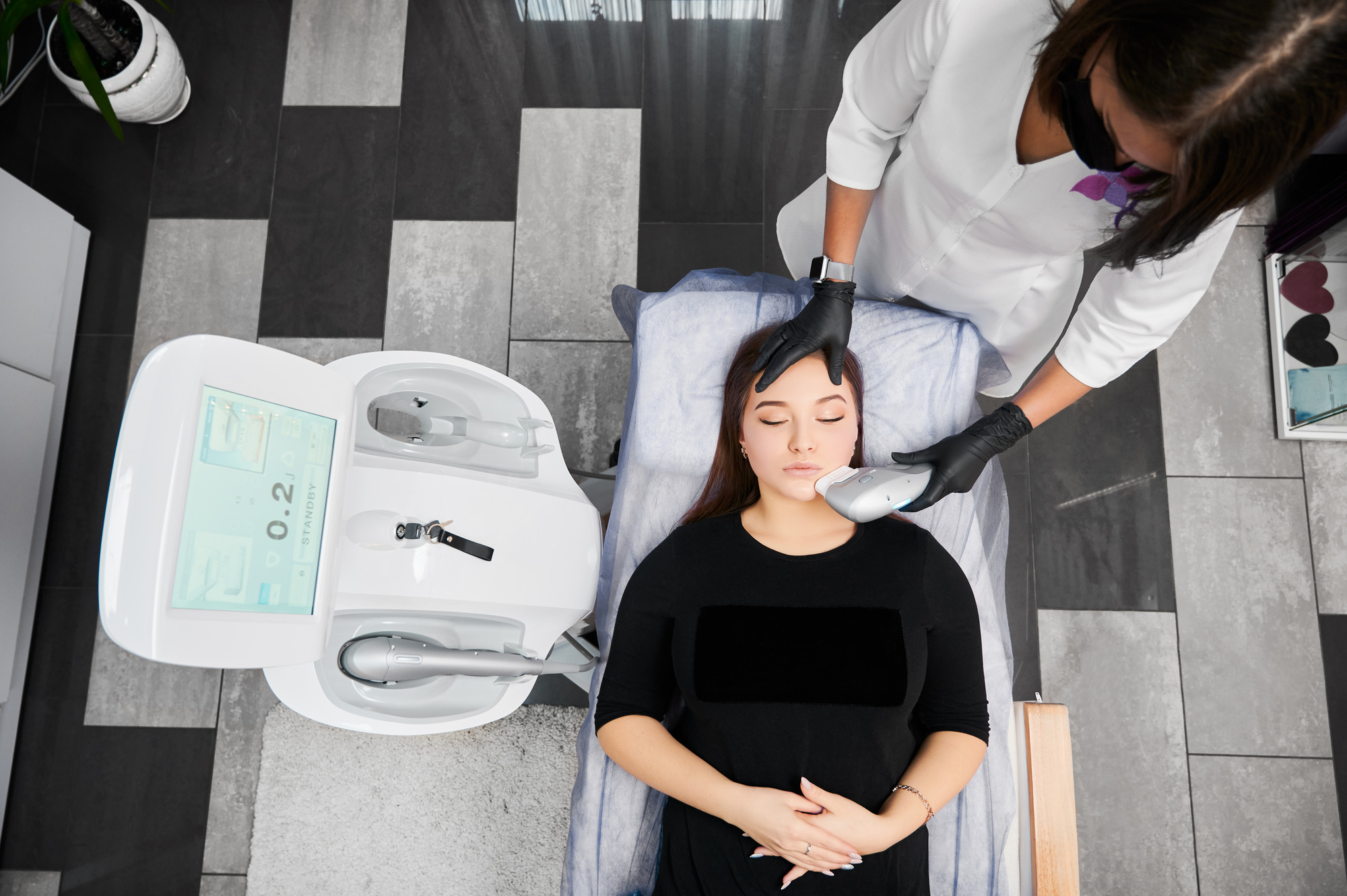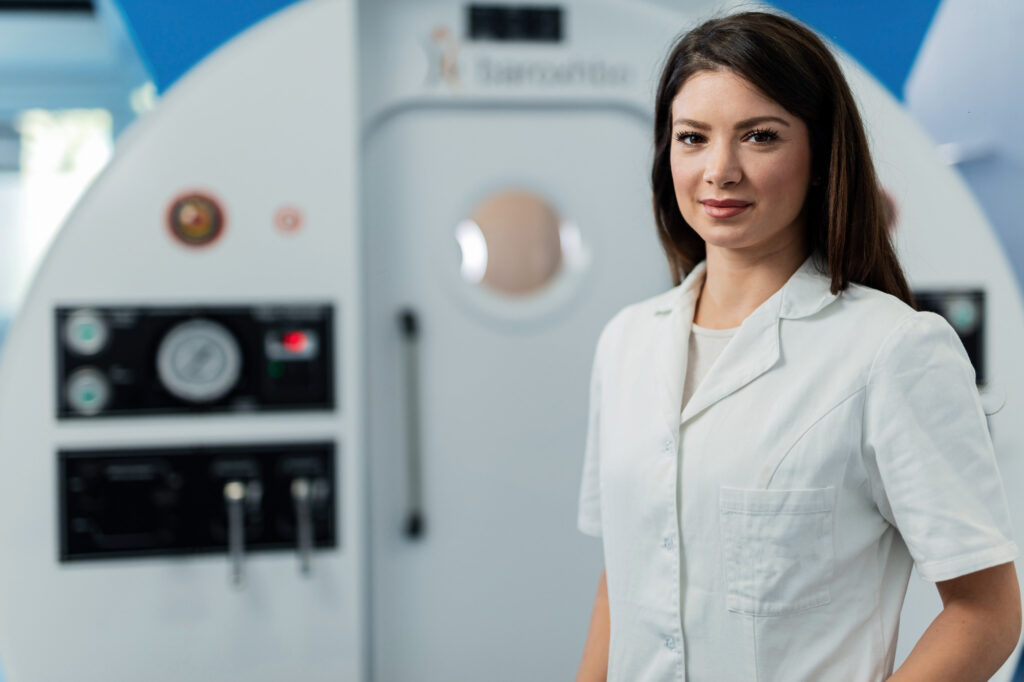Over the years, there’s been an increase in non-surgical body contouring and skin tightening solutions and the medical aesthetics industry has responded to this by increasing advanced minimally invasive procedures. BodyTite and J Plasma are among the procedures that have gathered attention, this article will discuss the features that make them stand out, how they compare, and how they differ in delivering results.
Exploring the Technology Behind BodyTite
How BodyTite Works
BodyTite® is a radiofrequency-assisted liposuction (RFAL) device used for body contouring. It consists of a workstation that houses the RF generator, software, and circuitry and also has hand pieces that connect to the workstation, each designed for specific treatment areas and procedures.
Each handpiece has a bipolar configuration consisting of an internal electrode that is a silicon-coated cannula with a radiofrequency-emitting tip for tissue manipulation and an external electrode that slides along the skin’s surface in tandem with the internal one. The internal electrode is smaller but has a higher density while the external one is larger with a lower density.
RF energy oscillates between the internal and external electrodes at a rate of 1 million cycles per second, generating targeted heat within the treatment area. The RF energy flows from the smaller electrode to the larger one providing a “thermal containment” and minimizing heat transfer to deeper structures.
The internal electrode is inserted beneath the skin during the procedure. The RF energy is highly ablative and coagulative within 1-2 cm of the internal electrode but becomes more diffuse as it reaches the external electrode.
Tissue close to the internal electrode experiences a necrotic, ablative thermal effect while those that are closer to the dermis experience a sub-necrotic, non-ablative thermal stimulation. The RF energy aims to achieve a three-dimensional contraction of soft tissue and it achieves it through internal RF stimulation and contraction of the fibroseptal network (FSN) as well as dermal enhancement through non-ablative thermal stimulation and neo-collagenesis.
Evidence for RFAL Contraction:
- A chapter by Robert Stephen in the Book of Body Contouring suggests the optimal temperature for thermal contraction and shortening of the FSN network is around 69°C.
- Other studies have shown tissue area contraction ranges from 25% at 6 months to 34% at 12 months following BodyTite® procedures.
The Science of J Plasma
J Plasma Procedure Explained
J Plasma, also known commercially as Renuvion, is a skin-tightening and resurfacing technology developed by Apyx Medical, formerly known as Bovie Medical Corporation. J Plasma system received FDA approval in 2012 for general use in surgical, cosmetic, and dermatological procedures.
In April 2023, the FDA also cleared the Renuvion APR handpiece for coagulation of subcutaneous soft tissues following liposuction for aesthetic body contouring.
The core component of the J Plasma system is a specialized handpiece that releases a precisely controlled stream of helium plasma energy that is capable of penetrating the deeper layers of the skin without causing significant damage to the surface. Helium plasma is a focused stream of ionized gas.
A high-frequency electrical current is passed through helium gas within the J Plasma system which excites the helium gas and stripe electrons from its atoms. This transforms the gas into plasma which is a state of matter where free-moving electrons and positively charged ions coexist.
The specialized handpiece mentioned above directs the stream of helium plasma towards the targeted tissue beneath the skin’s surface triggering a strong wound-healing response in the targeted tissue. The wound-healing response leads to the improvement of the skin’s texture, tone, and tightness by stimulating the production of new collagen and elastin fibers. The handpiece is completely external and non-invasive and that means no incisions are required in the procedure.
BodyTite Vs. J Plasma: Evaluating the Differences

| Feature | BodyTite | J Plasma (Renuvion) |
| Technology | Radiofrequency Assisted Liposuction (RFAL) | Helium Plasma |
| Energy Source | Radiofrequency | Electrical current and helium gas |
| Primary Function | Fat removal and skin tightening | Skin tightening and rejuvenation |
RFAL liquefies fat deposits while stimulating collagen production thus making BodyTite a better option for anyone looking for comprehensive body contouring.
J Plasma approaches it differently by focusing on skin rejuvenation and tightening and not comprehensive body contouring thus making it a better option for patients who are looking for skin tightening results without the need for incisions.
Efficacy in Skin Tightening and Rejuvenation
| Treatment Area | BodyTite | J Plasma |
| Face and Neck | Improves jowls, neck laxity, and overall facial contours | Tightens and rejuvenates the skin on the face and neck |
| Arms | Reduces upper arm skin laxity and smoothes the appearance of the arms | Improves skin texture and tightness in the arms |
| Abdomen | Addresses loose and sagging skin | Improves overall abdominal skin quality and tone |
| Thighs and Buttocks | Reduces skin laxity and smoothing contours | Enhances skin texture and tone |
What Patients Can Expect: Procedures and Recovery
Preparing for BodyTite and J Plasma Treatments
Patients should familiarize themselves with:
- Procedural steps
- Recovery time
- Essential aftercare
The first step is having a comprehensive consultation that will set the stage for a more personalized treatment plan and your doctor will give you realistic expectations.
Your doctor will then give you pre-treatment instructions such as dietary adjustments, medication alterations, or recommended lifestyle changes a few weeks preceding the procedure.
Post-Treatment Care and Recovery
BodyTite
- Some patients have some swelling, bruising, and discomfort that fade away within one to two weeks.
- Standard discharge instructions include:
- Wearing a compression garment
- Proper wound care
- Pain management plan
- Swelling and bruising gradually subside over the first few weeks but it might take several months for the full tightening effects to become fully apparent as collagen production increases.
J Plasma
- Has a shorter recovery time compared to BodyTite, with downtime ranging from a few days to a week.
- Aftercare instructions are similar to BodyTite which includes wearing a compression garment, proper wound care, and pain management.
- Swelling and discomfort are usually milder with J Plasma.
Who Should Choose BodyTite or J Plasma?
Making the Right Choice: BodyTite or J Plasma
| Procedure | Ideal Candidates | Skin Types | Health Considerations |
| BodyTite | Mild to moderate skin laxity
Localized fat deposits Good overall health |
All skin types | No active skin infections
No conditions affecting healing |
| J Plasma | Fine lines/wrinkles
Mild facial skin laxity Lighter skin tones No active infections |
Lighter skin tones preferred | No conditions affecting healing |
BodyTite works best when you have significant skin laxity. J Plasma is a good option when you have milder laxity or when you need a more delicate tightening effect but it wouldn’t be the best choice for very loose skin. When choosing between the two consider your goals, skin quality, laxity severity, and any health conditions like those mentioned above that would make you ineligible for the condition.
Analyzing the Cost and Accessibility of BodyTite and J Plasma
Understanding the Costs
| Procedure | Cost Range | Average Cost |
| BodyTite | $3,000 – $10,000 | $4,500 |
| J Plasma | $1,500 – $5,000 | $2,500 |
Both BodyTite and J Plasma are considered elective cosmetic procedures and are therefore not covered by insurance providers but many practices offer financing options through the provider or third-party lenders to help manage treatment expenses. Book a call with us today and ask for financing options.
BodyTite and J Plasma cost differently depending on the surgeon’s experience, and treatment complexity. BodyTite costs more because it combines fat removal and tightening capabilities.
Ensure you find a board-certified dermatologist or plastic surgeons with enough experience and great reputation. Go through their patient reviews, research their qualifications and ask all the necessary questions including how they approach patient safety.
Conclusion
BodyTite and J Plasma represent advanced options in minimally invasive body contouring. Let’s revisit the key points to guide your decision:
BodyTite removes fat with RF energy and also tightens the skin and is best when your issue is significant skin laxity and unwanted fat deposits. If your goal is to remove fat then BodyTite is the clear choice.
J Plasma is a non-invasive option that uses helium plasma (ionized helium gas) to help your skin rejuvenate and tighten and is good for milder laxity concerns and is more beneficial to people with fine lines, wrinkles, and mild facial skin laxity.
BodyTite costs more because it has both fat removal and skin tightening effects.
FAQ BodyTite vs J Plasma
What are the primary differences between BodyTite and J Plasma in terms of procedure and results?
BodyTite is a radiofrequency-assisted liposuction procedure that removes fat and tightens the skin but J Plasma uses helium plasma energy to tighten and rejuvenate the skin without fat removal.
How does the recovery time for BodyTite compare to that of J Plasma?
BodyTite patients take longer to recover than J Plasma patients. BodyTite takes one to two weeks with swelling, bruising, and discomfort while J Plasma takes a few days to a few weeks.
Are BodyTite and J Plasma procedures suitable for all skin types?
BodyTite can be performed on all skin types but lighter skin tones are recommended for J Plasma because it may cause hyperpigmentation in darker skin tones.
How long do the effects of BodyTite and J Plasma last?
Some degree of skin laxity may eventually return over time but the results of both procedures can last for several years with proper skin care.

